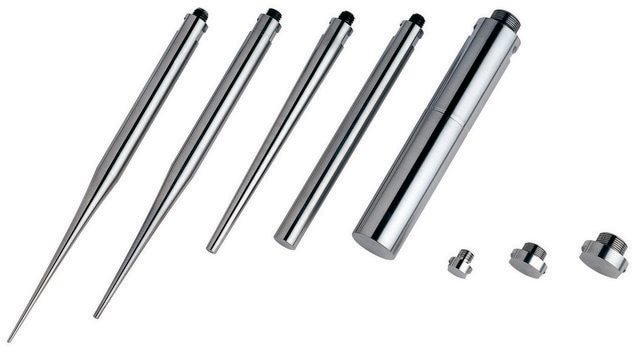Z511471
Ultrasonic processors 500W and 750W
500W, AC/DC input 220 V AC, Schuko plug
Synonym(s):
sonicator, ultra sonicator, ultrasonic homogenizer
About This Item
Recommended Products
feature
CE compliant
manufacturer/tradename
Sonics & Materials VCX500-220V
Looking for similar products? Visit Product Comparison Guide
Related Categories
General description
- Automatic tuning and frequency control
- Integrated temperature controller from 1°C to 100°C
- Stores up to 10 procedures
- Real time display
- Control process time from 1 second to 10 hours
- Shipped complete with a 1/2 in. (13 mm) probe (630-0220) with replaceable tip, tool kit, and instruction manual
Applications: Cell disruption in bacteria, spores, and tissues; accelerating catalytic reactions; extractions of serums, toxins, enzymes, and viruses from organic sources; solubilizing difficult compounds; emulsification to 0.01 mm; homogenizing liquids; sample preparation from microscopy and particle size analysis.
related product
Certificates of Analysis (COA)
Search for Certificates of Analysis (COA) by entering the products Lot/Batch Number. Lot and Batch Numbers can be found on a product’s label following the words ‘Lot’ or ‘Batch’.
Already Own This Product?
Find documentation for the products that you have recently purchased in the Document Library.
Customers Also Viewed
Protocols
The dispersibility and bundle defoliation of single-walled carbon nanotubes (SWCNTs), which can be applied to materials produced by the CoMoCAT® process, have been extensively investigated by SouthWest NanoTechnologies (SWeNT ®) and at the University of Oklahoma.
Related Content
An overview of cell lysis and protein extraction methods including detergent solubilization, freeze-thaw lysis, osmotic shock, sonication, enzymatic cell lysis, and mechanical disruption techniques such as Dounce, Polytron, and mortar and pestle homogenization.
An overview of cell lysis and protein extraction methods including detergent solubilization, freeze-thaw lysis, osmotic shock, sonication, enzymatic cell lysis, and mechanical disruption techniques such as Dounce, Polytron, and mortar and pestle homogenization.
Our team of scientists has experience in all areas of research including Life Science, Material Science, Chemical Synthesis, Chromatography, Analytical and many others.
Contact Technical Service








